In the category Spanish cooking recipes we occasionally present typical recipes from Spain. The last edition was about the recipe of the Spanish Omelette that we prepared in a cooking session with a group of students.
This time we made a very typical recipe of this region, the Sierra de Cádiz, and of this season, the spring. Tagarnina is the popular name of the Castilian wild thistle, one of many Arabic words in the Spanish language. In this link you can see an enormous list of words that have come to the Spanish language during the time of Al-Andalus (711-1492) when Spain was under Muslim rule.
The tagarnina – its botanical name is scolymus hispanicus – grows wild in the countryside, so it has very good properties for health, among others it is a diuretic (helps eliminate fluid from the body) and liver protective and contains inulin, a natural sugar which is especially suitable for diabetics.
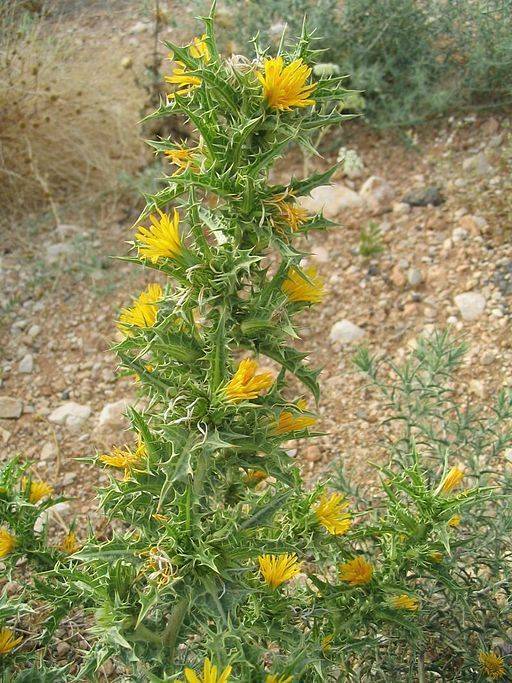
During the Civil War the thistles and wild asparagus were an important staple food for families food shortages. To collect them you have to go to the country with cutting tools such as a hoe or a knife to cut the plant without damaging the root. We must collect the thistles in spring time when the plant is close to the soil, before it rises and flourishes.
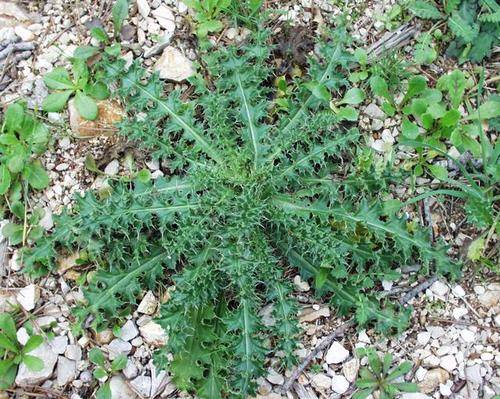
Here in the rural area there are a few people who collect tagarninas and asparagus in the country and sell them. This is what we opted to and thus also support the families of the village in times of economic crisis. In the video you can see how to collect and peel the thistles.
Bueno, después de dejaros esta información relacionada con las tagarninas voy a seguir en español para que practiquéis y voy a empezar a contaros cómo hicimos el revuelto de tagarninas en nuestra sesión de cocina el viernes en la cocina de la casa número 13, Eso sí, con una buena copa de vino oloroso de Prado del Rey para abrir el apetito.
- Lavamos las tagarninas y les quitamos la parte dura del tallo. Hay que lavarlas bien para quitar toda la tierra que está pegada a la planta, sobre todo en la parte baja. Las cortamos en trozos pequeños y las dejamos escurrir.
- En una olla grande con agua hirviendo y sal pusimos las tagarninas a hervir durante 20 minutos hasta que estuvieran blandas.
- Pusimos a calentar a fuego medio una sartén con un fondo de aceite.
- Picamos el ajo y la cebolla en daditos finos y los doramos en la sartén. Después añadimos las tagarninas.
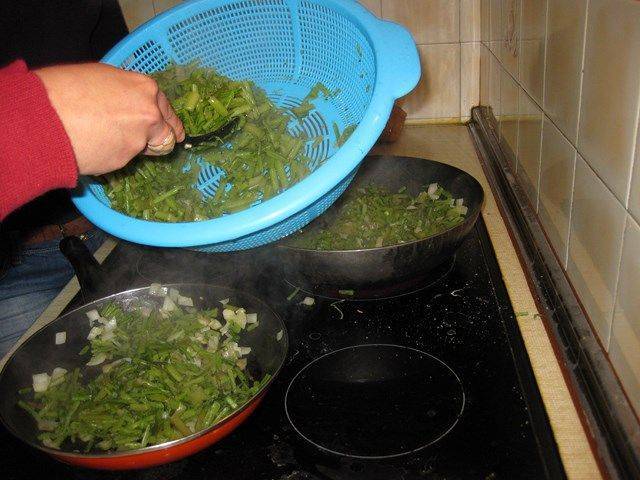
- Agregamos sal y pimienta al gusto y removimos.
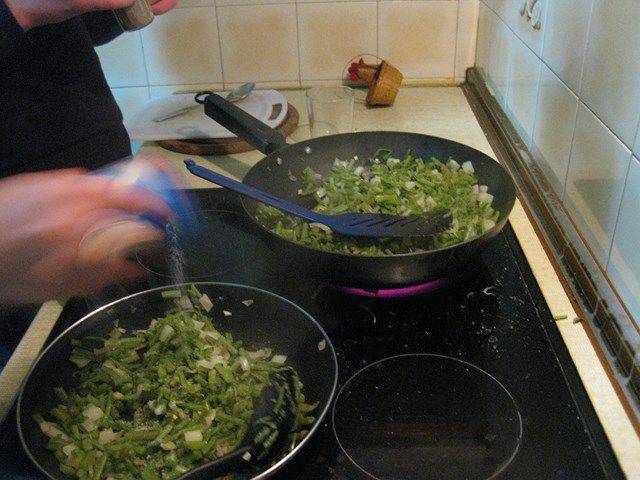
- Cascamos los huevos encima sin batir y los dejamos cuajar un poco. Removimos con cuidado y al cabo de pocos minutos ya estuvo listo el revuelto.
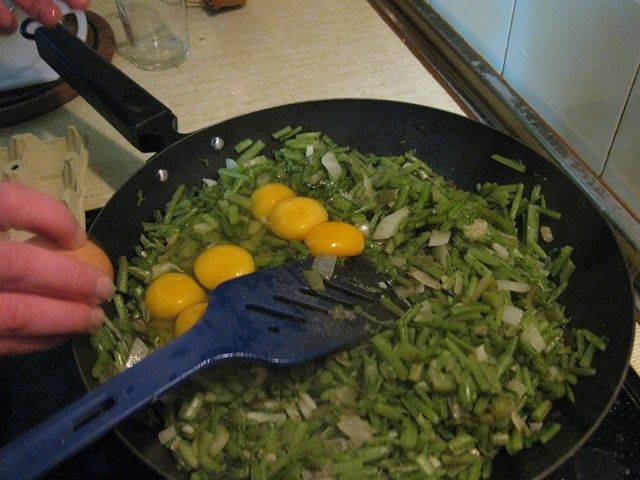
- ¡A cenar!
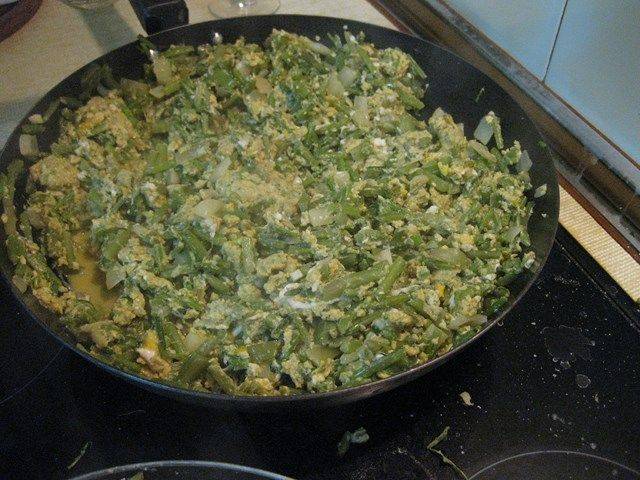
¡Enhorabuena a las cocineras! Os salió riquísimo el revuelto y lo disfrutamos con una película de Sherlock Holmes que al parecer sólo sirvió de excusa para sentarnos todas en el sofá 😉

La receta:
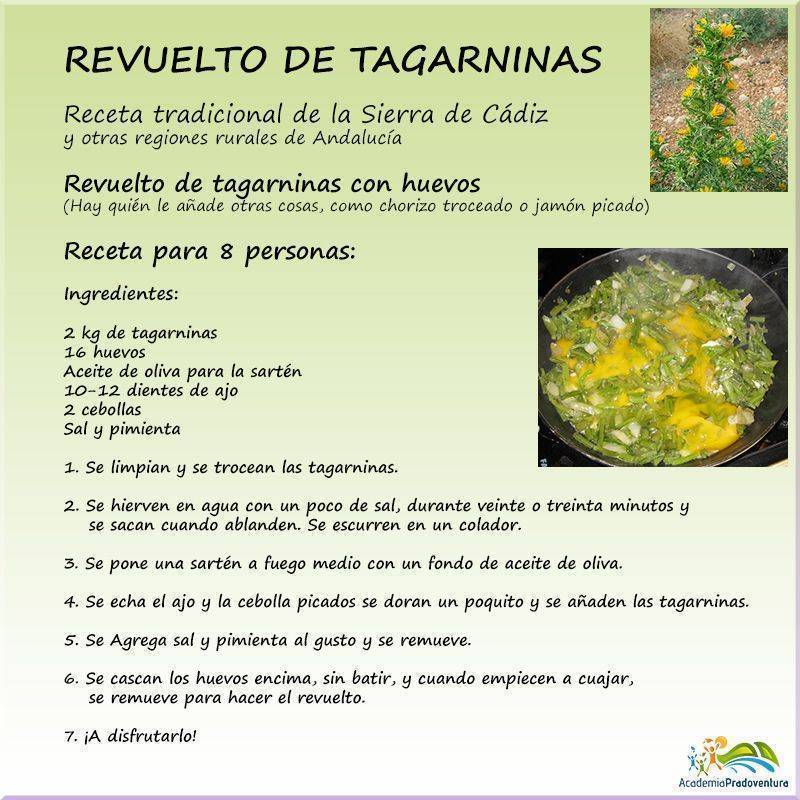
Interesting links:
Más recetas con tagarninas: http://grupogastronomicogaditano.com/Noticias/noticias3.2.htm
Información sobre las tagarninas: http://bloglauraesperaunafoto.blogspot.com.es/2011/06/cardillostagarninasscolymus-hispanicus.html
Photos:
Tagarnina en flor: by Iorsh via Wikimedia Commons
Tagarnina antes de florecer: by Tagarhnina
Las demás fotos son propias.
Author: Anja Dibbert






Muchas gracias por vuestro consejo
¡Un placer! Nos alegramos de que te guste.
He hecho vuestra receta y esta espectacular. El sabor de las tagarninas me lleva a los más potentes del terreno.
Gracias por compartir y por rescatar esta cocina popular.
Nos alegra leer que te haya salido bien el revuelto de tagarninas y que te haya gustado el sabor de las tagarninas. Las recetas antiguas no se deben perder…